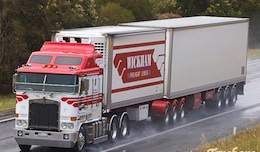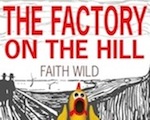Economics of the proposal
If the proposed farm is similar to other operations run by US company Inghams Enterprises, the farm owner will be growing the birds for Inghams who sell them the day-olds and buy the grown birds back after five or six weeks for processing. Inghams provide all the feed. The owner manages the growing operation, infrastructure, water supply, shed cleaning etc. Any birds that die are the applicant’s loss. It is the margin between the purchase price and the sale price that covers the operating expenses and turns a profit. The rates vary, but are currently range from 49 to 64 cents per bird.
Farm gate prices for chickens are determined by the terms and conditions of the contract between the grower and the processing company and as such are not publicly available. ABARE’s indexed prices suggest that the real prices received by poultry growers in Australia increased in 2010-11, after decreasing in 2009-10.
As well, increasing grain prices and fuel costs will combine to further squeeze the profit margins on the broiler farm owner. This is compounded when you realise that the millions of dollars of infrastructure costs require a decent return and, once built, will have to be utilised for a long time to come.
Property prices fall
The success of this application will affect the property prices of neighbours and those along the haul route. The devaluation effect of broiler farms on neighbouring properties is undeniable – but also variable depending on the proximity and size of the adjoining blocks of land.
The problem is when the number of birds relative to the size of the broiler block has already been recognised as likely to impact neighbours – by the separation distance requirements in the permit extending over neighbours’ land as far as the houses. Where the predicted – and later actual – impacts invade a significant proportion of an adjoining, usually smaller, block there can be substantial devaluation which starts when the permit is granted. More HERE.
Does the community benefit?
A good question to ask, since the district does need a wide economic base, so what are the benefits for people in the district apart from the owner of the operation.
1. The sheds may be constructed by contractors from outside the district.
2. The birds are trucked in from outside the district.
3. The feed is trucked in from outside the district.
4. The grown birds are caught and trucked out of the district to the processing factory.
5. The avocado orchard is picked by backpackers bussed in from Noosa.
The applicant originally maintained the operation would be managed by current employees and stated in the traffic report that there would be no employee trips. More recently, the applicant has stated that there will be 10 permanent jobs, although exactly what these jobs would be has not been explained. In these operations, the main job of the farm owner is to remove, dispose of and record the dead birds on a daily basis. Assuming an industry average 4-6% mortality rate, this means at least 1,400 birds dying over the 6 week growing cycle in each shed, with the farmer on average picking up 30 dead birds a day in each shed over the cycle.
It is hard for the applicant to claim much local economic gain for Cooroy. On the other hand, the affects to locals and neighbours from the noise, dust, visual amenity, etc, the disruption to hinterland tourism, the potential despoliation of the waterways, and the danger to road users from the heavy vehicle traffic is huge. Then there’s a possible drop in land values which could equate to rate loss for the new council. Not to mention the big road repair bill which is bourn by Noosa ratepayers.
How could such a costly venture make a profit?
When you look at the potential profit and loss figures based on the applicant receiving the maximum rate from Inghams of 65 cents per grown bird, it appears that, after bank interest on the $12 million dollar investment the applicant claims is involved in the project, the annual loss would be over $1 million. No Broiler Farm Cooroy has just presented a submission to the council which includes estimates of potential financial losses. You can view it HERE.




I am against this project. I see no advantage to anyone or anything to help the Noosa Shire population or lands.